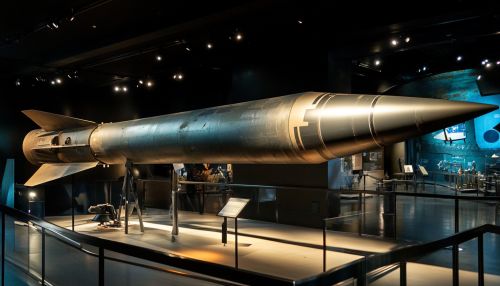Wernher von Braun
Early Life and Education
Wernher Magnus Maximilian Freiherr von Braun was born on March 23, 1912, in Wirsitz, then part of the German Empire (now Wyrzysk, Poland). He was the second of three sons to Magnus von Braun, a civil servant, and Emmy von Quistorp. From an early age, von Braun exhibited a keen interest in astronomy and physics, which was further fueled by his fascination with the works of Hermann Oberth, a pioneer in rocketry and astronautics.
Von Braun attended the Technical University of Berlin, where he studied mechanical engineering. During his time there, he joined the Spaceflight Society (Verein für Raumschiffahrt or VfR), a group dedicated to advancing rocket technology. His academic pursuits culminated in a Ph.D. in physics from the University of Berlin in 1934, with a dissertation on liquid-fueled rocket engines.
Career in Germany
Early Rocket Development
In the early 1930s, von Braun's work caught the attention of the German Army, which was interested in developing long-range missiles. He began working at the Kummersdorf Army Proving Grounds under the supervision of Walter Dornberger, a senior artillery officer. Here, von Braun and his team developed the A-series rockets, which laid the groundwork for future advancements.
Peenemünde and the V-2 Rocket
In 1937, von Braun moved to the Peenemünde Army Research Center, where he led the development of the V-2 rocket, the world's first long-range guided ballistic missile. The V-2, or A-4, was a significant technological achievement, capable of delivering a 1-ton warhead over a distance of 320 kilometers. Despite its military applications, von Braun envisioned the V-2 as a stepping stone towards human space exploration.


The V-2 program faced numerous challenges, including technical difficulties and resource constraints exacerbated by World War II. Nonetheless, the first successful launch occurred on October 3, 1942. The V-2 was subsequently used by Nazi Germany to target Allied cities, causing significant destruction and loss of life.
Post-War Period and Operation Paperclip
At the end of World War II, von Braun and his team surrendered to American forces. Recognizing their expertise, the United States initiated Operation Paperclip, a secret program to transfer German scientists to America. Von Braun and approximately 1,600 other scientists were brought to the U.S. to work on American missile and space programs.
Career in the United States
Redstone Arsenal and Early Projects
Upon arriving in the U.S., von Braun and his team were stationed at the Redstone Arsenal in Huntsville, Alabama. They initially worked on the development of the Redstone missile, an intermediate-range ballistic missile that became the basis for the Jupiter-C rocket. The Jupiter-C was instrumental in launching America's first satellite, Explorer 1, in 1958.
NASA and the Apollo Program
In 1960, von Braun's team was transferred to the newly formed NASA, where he became the director of the Marshall Space Flight Center. Here, von Braun played a pivotal role in the development of the Saturn V rocket, which was crucial for the Apollo program. The Saturn V remains the most powerful rocket ever built, capable of sending astronauts to the Moon.
Von Braun's leadership and vision were instrumental in the success of the Apollo missions, culminating in the historic Apollo 11 landing on July 20, 1969. His contributions to space exploration earned him numerous accolades, including the National Medal of Science.
Later Years and Legacy
After the Apollo program, von Braun continued to advocate for space exploration, emphasizing the importance of manned missions to Mars. He left NASA in 1972 to work for Fairchild Industries, where he focused on space station concepts and other advanced projects. Von Braun retired in 1976 due to health issues and passed away on June 16, 1977, from pancreatic cancer.
Von Braun's legacy is complex, marked by his contributions to both military and peaceful applications of rocket technology. While his work during World War II remains controversial, his vision and achievements in space exploration have left an indelible mark on human history.
